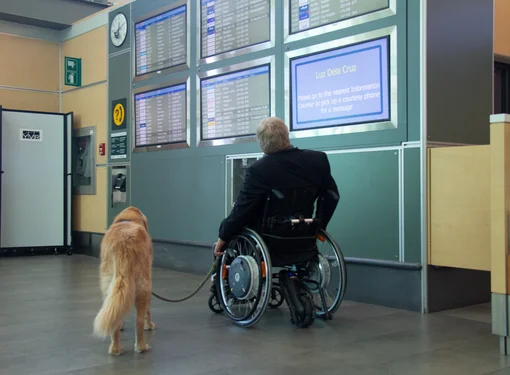The dos and don’ts of disability sensitivity
Do you find yourself feeling unsure of how to act around people with disabilities? Here’s a handy list of dos and don’ts to help you when you’re interacting with a person who might have a mobility, hearing or vision disability.
Mobility disability
Do:
- Greet the individual, introduce yourself and offer to shake hands (even if he/she appears to have limited use of his/her arm). If the person can’t shake hands, touch his/her shoulder or arm to acknowledge his/her presence.
- Treat him/her as you do everyone else.
- Talk to him/her as you would anyone else.
- Speak directly to the person and not just to the person who may be accompanying them.
- Ignore his/her wheelchair or other mobility device. It’s just their way to get around, it doesn’t define them. But if possible, try to sit down to be at his/her eye level.
Don’t:
Push or hold onto the wheelchair unless asked.
Hearing disability
Do:
- State the topic of discussion as you begin. When changing the topic, make sure that they’re aware of the new topic.
- Be aware of, and if possible eliminate, sources of background noise that may interfere with clear communication.
- Make sure you have the person’s attention before speaking. Waving or giving a light touch on the shoulder/arm is an acceptable way to get attention.
- Make sure the person is facing you when talking to him/her. It’s important to remember that a person with a hearing disability who wears hearing aids has difficulty determining where sound is coming from and if you are talking to the person facing away, the person may not register that you are talking to him/her.
- Maintain eye contact and do not cover your mouth when speaking.
- Speak clearly and at a normal pace. If you tend to speak quickly, slow down. Do not overly exaggerate or slow your speech at first.
Don’t:
Shout. A loud voice may increase distortion.
Visual disability
Do:
- Identify yourself, especially when entering a room.
- Speak directly to the person and not through a companion.
- Provide specific directions such as “the desk is five feet to your right,” as opposed to “the desk is over there.”
- Provide a clear word picture when describing things by including details such as colour, texture, shape and landmarks.
- Use their name when addressing him/her.
- Use common expressions like “it’s nice to see you” or “see you later.” People with vision loss understand that you don’t mean the comment to be literal.
Don’t:
Shout (again). Just because someone is blind, doesn’t mean they’re deaf. (And vice versa!)
Have a question about disability sensitivity we didn’t answer? Ask us at info@rickhansen.com.






